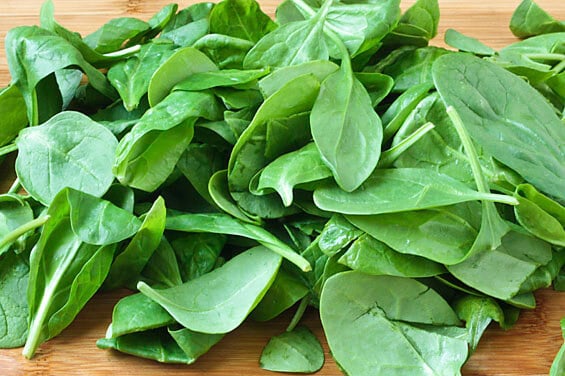Spinach Salad with Warm Bacon Vinaigrette
Yields: 6 Servings
3 eggs
2
lbs baby spinach leaves
1 tsp sugar
6 Tbls Apple Cider Vinegar
Pinch Salt & pepper
2 Sliced Shallots
2 Cloves Garlic minced
8 slices thick cut applewood smoked bacon
Place eggs in saucepan and cover with water
and a pinch of salt. Bring to a boil and cook for 10 mins. Rinse under cold
water and let cool. Peel and cut egg into slices with an egg slicer. Chop bacon
into smaller pieces and cook in a sauté pan until crisp. Remove bacon from pan
and drain on paper towels. Do not discard the bacon fat. Combine vinegar with
sugar, salt & pepper. Saute shallots in bacon fat until light golden. Add
garlic and cook for one minute until the garlic begins to exude its aroma. Add
vinegar/sugar mix and bring to a boil. Cook for one minute and remove from
heat. Pour hot dressing over spinach leaves and toss quickly so the leaves do
not wilt. Serve with egg slices and a sprinkle of the cooked bacon bits.

Creamed Spinach
Yields: 4 Servings
2 lbs spinach, thick stems removed
3 shallots, sliced
2-3 garlic cloves, minced
2 Tbl unsalted butter
2 Tbl extra virgin olive oil
Pinch Kosher Salt and Freshly Ground Pepper
Pinch Nutmeg
1 Tbl AP Flour
¼ cup Heavy Cream
¼ Cup Grated Parmesan Cheese
Heat butter and oil in a sauté pan over medium high heat.
Add shallot and sauté until softened. Add garlic and sauté one minute or until
fragrant. Add spinach and season with salt, pepper and nutmeg. Cook uncovered
until the spinach has wilted and all the liquid has evaporated. Add flour and
sauté for a couple of minutes to cook the rawness out of the flour. Add cream
and bring to a simmer. Add parmesan and heat through to melt. Adjust seasoning
to taste.



